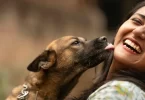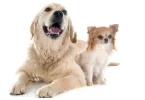Does your dog cower at the sight of a stranger? Or become fearful when he’s around other dogs? If so, this could signal a lack of confidence in your dog, which can make life difficult for both you and your pup.
Nervous behavior in dogs usually stems from negative experiences in their past. This may not affect you if you’re buying a new-born pup. dog health insurance
But if you’re purchasing an older dog or a pooch from a rescue center, you need to find out all you can about their background as this may give you clues as to why they behave the way they do.
When a dog lacks confidence, they can express that in different ways. Some run away and hide with their tail between their legs; others bark and become aggressive.
To protect your pup from any accidents or incidents that might occur when their lack of confidence gets the better of them, make sure you have the right dog insurance in place.
Not only does this cover vets bills and loss by straying, it can also give you third party liability to protect you from claims from other people.
Why is Confidence Important in Dogs?
Confident dogs enjoy learning new things and taking new adventures. They take everyday challenges in stride. Confident dogs don’t have to be excessively coaxed into doing simple things. They don’t have to be watched like a hawk in case they interpret someone’s actions the wrong way. The confident dog is unlikely to take minor setbacks to heart. Their recovery time and willingness to try again after a slight mishap is generally fast. They’re able to move up to new, more difficult, and challenging levels of training or adventure with ease.
If you are a hobby trainer, competitor in dog shows, sports, or working trials, or if you simply love to include your dog in family adventures, having a confident dog will be important to you.
Here are 5 ways to help boost your dog’s confidence:
5. OBEDIENCE TRAINING CAN HELP A NERVOUS DOG
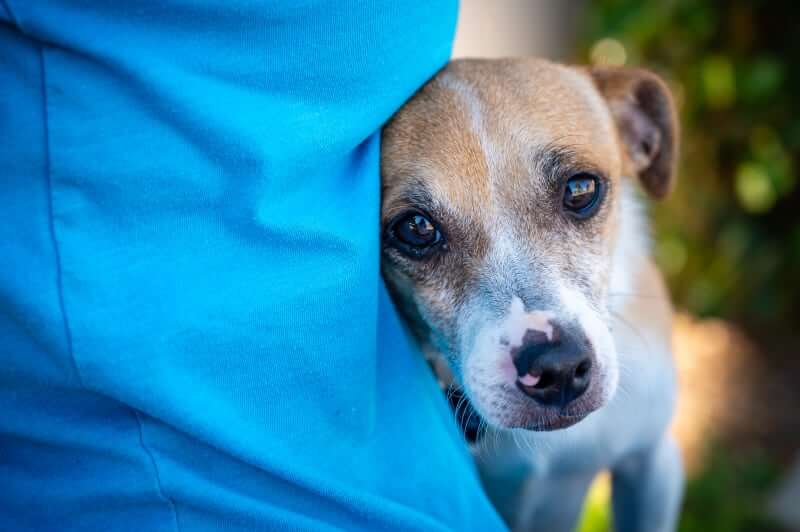
Training your nervous dog to do simple tasks such as to sit, stay, or come to you, is far more beneficial than you might think! There are two ways it can help build up their confidence:
The first is the relationship between you and your pup. When you begin to train your dog, you start creating a new kind of bond with them, which can give both of you a sense of trust with each other. So, when it comes to being in new environments, where they might feel nervous, your direction and tone can help them to feel more secure. Start in familiar surroundings, so that when it does come to new places, it will be easier to direct them.
The second is that they’ll learn how and when to do things on command, and with the help from rewards, they’ll know when they’re doing things right. Reinforcing good behavior with rewards gives them the confidence to follow your commands. Training builds up a language between the two of you, so you’re like a team working together!
4. FREE SHAPING CAN HELP A NERVOUS DOG

Free shaping teaches a dog to be creative and encourages curiosity. Often, nervous dogs will be afraid of approaching new objects or people, so free shaping will help them to overcome that fear!
It’s good to start simple – place an object such as a box or an unknown toy in front of your dog, and don’t do anything. It’s best to do this in a familiar space, but with nothing else around, to avoid distraction. Let them approach it in their own time. When they begin to act, such as sniffing it, praise them or give them a treat. This lets them know that they can do things without your direction, and that’s okay!
Free shaping can be done with anything. It might require a bit of patience from you, but it will give your dog the confidence to approach new things without feeling unsafe.
3. TARGETING CAN HELP A NERVOUS DOG
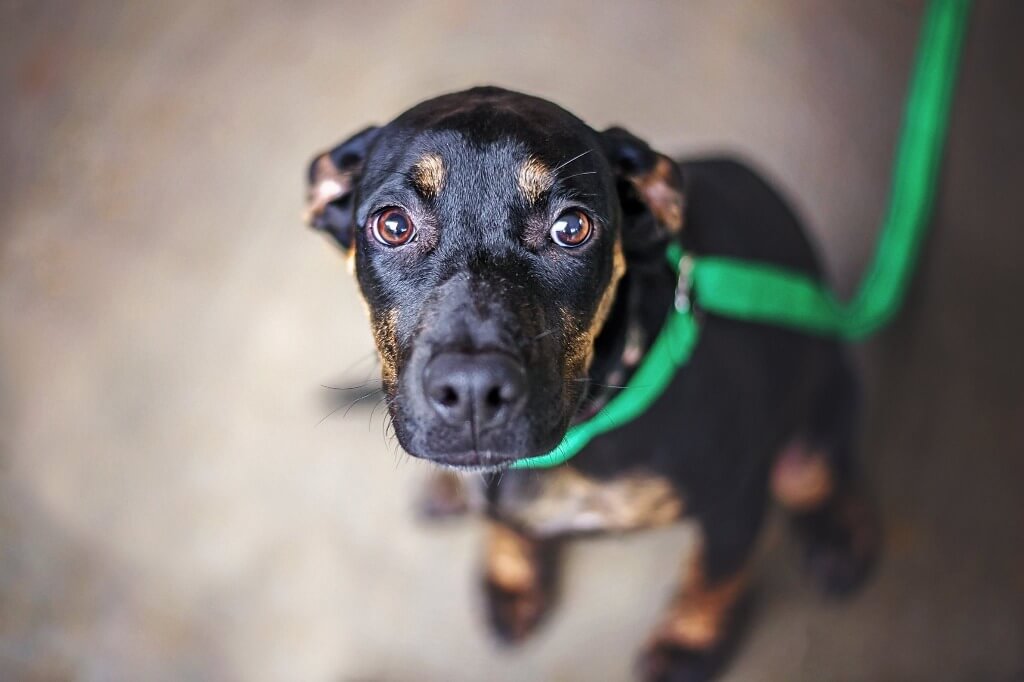
Targeting is similar to free shaping, but this is about rewarding your nervous pup for touching things. New people can be scary to anxious dogs – even the nicest of people! And targeting is great for teaching your dog how to greet a new hand.
All you need is your hand and some treats. Start by holding out one hand, and when your dog sniffs, licks or touches it, give him a little treat. Then try with the other hand. Once they have done it a few times, start saying the word “touch” as their nose touches your hand – adding this language will help when they meet new people. You can try this by introducing your pup to a friend. Get your friend to do the same – hold out their hand, and if you need to reassure your dog, use the word touch.
If you find that your dog becomes nervous or aggressive around new people, despite doing the targeting activities, you should keep them calm when meeting strangers. It’s best that new people don’t get excitable, no matter how cute your furry friend is so communicate this to people in advance of contact between them and your pooch occurring.
If you want to ensure your dog doesn’t have a panic, you could also try giving them a calming chew.
2. INTERACTIVE GAMES CAN HELP A NERVOUS DOG
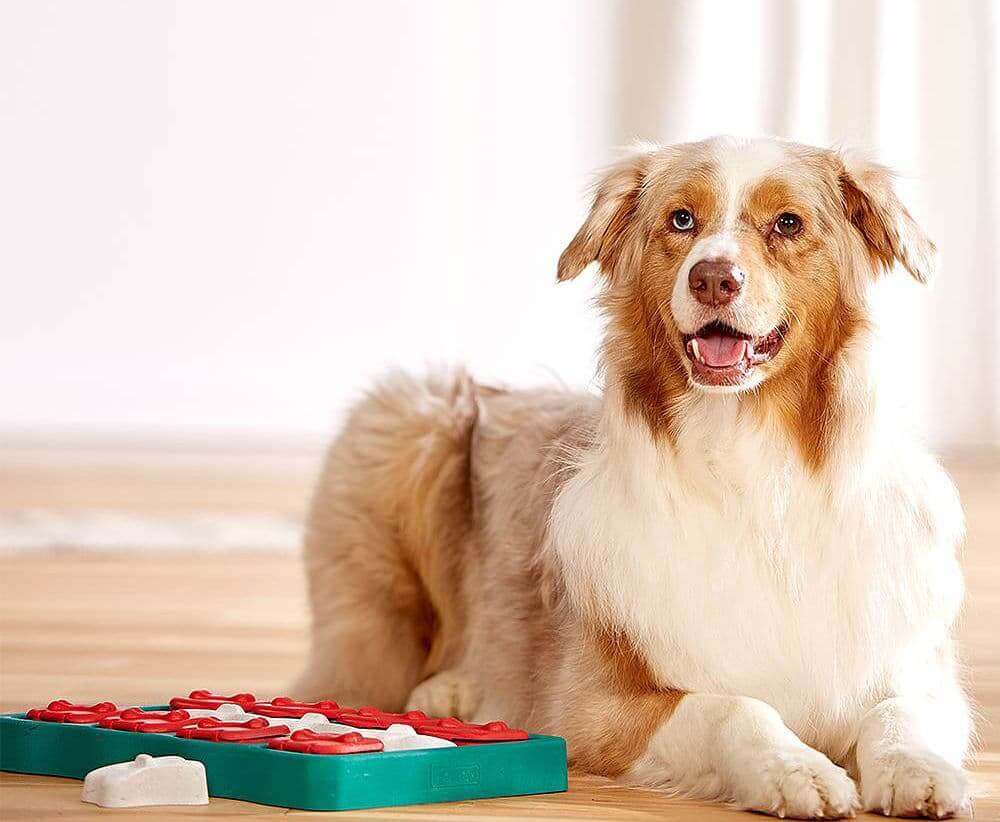
Games such as fetch and tug of war are fantastic activities, for a couple of reasons. The first is mental stimulation. When searching for a thrown ball or fighting to win the tug of war, the dog isn’t thinking about their fears; they’re focusing on the task at hand instead. Interactive games require a certain level of tactics, giving your nervous dog more confidence to use their own mind in different scenarios.
The second is the physical movement – much like humans, the more able you feel to move around and just do things, the less reluctant you are to do those things. The exercise they get from these games has the added benefit of releasing endorphins into your dog’s brain, making them feel happier and more confident. The happier they are, the less anxious they’ll feel!
1. TRICK TRAINING CAN HELP A NERVOUS DOG
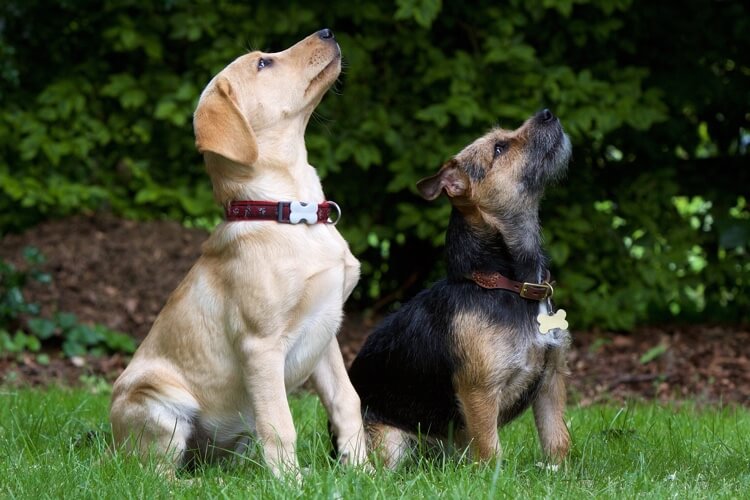
Most dogs are capable of learning tricks, but sometimes they need a push to do them. Supporting them with praise, love, and treats are going to be the best way to provide that support.
There are many tricks that are more advanced than sit and stay, which with patience and determination can be achieved by you and your dog. Some tricks can be entertaining, so once you have taught them the trick, you can show your friends and family – the praise they get from other people will make them feel like they’ve accomplished something and give them a confidence boost!
Feeling successful in something boosts confidence in dogs and humans alike, so always let your nervous dog know that their efforts are worthy of praise.
However, be careful not to feed them too many dog treats, as it could affect their weight and health. A dog’s treat allowance should only be 10% of their total food consumption per day to avoid unhealthy weight gain. And what size should each treat be? A treat should never be bigger than the nail on your first finger!




